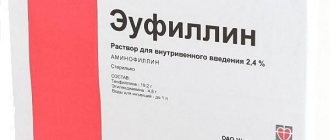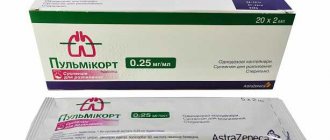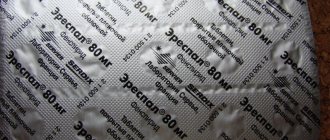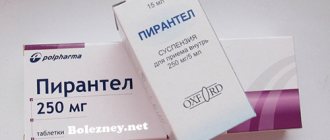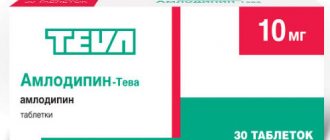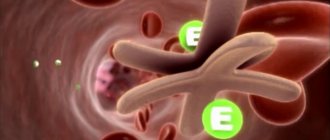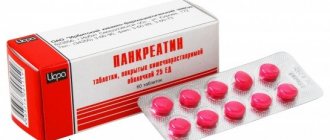With the onset of warm spring days, we feel the effects of cold weather, lack of sunlight and inadequate amounts of vitamins. To maintain normal health, a person needs calcium. This is the basis for the process of formation and growth of bone tissue and new cells. The substance is characterized by antimicrobial and antiallergic properties, reduces intoxication.
pharmachologic effect
Calcium is an essential macronutrient that is involved in the processes of bone tissue formation, transmission of nerve impulses, and blood clotting. This macronutrient is also necessary to maintain normal cardiac function.
Calcium improves muscle contraction in muscle dystrophy and myasthenia gravis, and also reduces vascular permeability. When administered intravenously, calcium gluconate exhibits a moderate diuretic effect, and also increases the secretion of adrenaline by the adrenal glands and causes stimulation of the sympathetic nervous system.
Can calcium gluconate be used during pregnancy?
The drug can be used during an “interesting situation”, starting from the second trimester. The daily concentration for expectant mothers is no more than 6 tablets, which is divided into 3 applications of 2 tablets each. Before treatment, a pregnant woman must undergo tests to determine the level of microelement in the body.
Two weeks before birth, pill therapy is discontinued, since increased use of the drug can lead to a risk of injury during the birth process. The use of calcium gluconate during breastfeeding is possible according to indications. The daily dosage is no more than 3 grams or 6 tablets - 2 pieces for 3 uses.
Indications for use
Why is calcium gluconate prescribed? It is advisable to prescribe injections and tablets for:
- increased need for calcium (pregnancy, breastfeeding, periods of intensive growth in children/adolescents);
- hypoparathyroidism (osteoporosis, latent tetany);
- hyperphosphatemia in patients with chronic renal failure;
- Ca metabolism disorders in the postmenopausal period;
- disorders of vitamin D metabolism (spasmophilia, rickets, osteomalacia);
- conditions that are accompanied by increased calcium excretion (chronic diarrhea, prolonged bed rest; long-term treatment with diuretics, corticosteroids or antiepileptic drugs);
- bone fractures;
- poisoning with oxalic acid, Mg salts, soluble salts of fluoric acid (the advisability of using the product as an antidote is due to the fact that, interacting with these substances, Ca gluconate forms non-toxic Ca oxalate and Ca fluoride);
- insufficient Ca content in the diet.
As an addition to the main treatment, Calcium Gluconate tablets are used as a means of:
- for bleeding of various origins, nutritional dystrophy, bronchial asthma, pulmonary tuberculosis, parenchymal hepatitis, eclampsia, nephritis, toxic liver damage;
- from allergies with itchy dermatoses, febrile syndrome, urticaria, serum sickness, angioedema.
Phoenix Health
Structural formula
True, empirical, or gross formula: C6H13NO5
Chemical composition of Calcium Gluconate
| Symbol | Element | Atomic weight | Number of atoms | Mass percentage |
| C | Carbon | 12,011 | 12 | 33,5% |
| H | Hydrogen | 1.008 | 22 | 5,2% |
| Ca | Calcium | 40,08 | 1 | 9,3% |
| O | Oxygen | 15.999 | 14 | 52% |
Molecular weight: 430.374
Calcium gluconate
- a chemical compound, calcium salt of gluconic acid, in medicine mainly used as a mineral supplement for hypocalcemia.
Physical properties
White powder, granular or crystalline. Soluble in water, practically insoluble in alcohol and ether. Contains up to 9% calcium.
pharmachologic effect
The Ca2+ drug replenishes the deficiency of Ca2+, which is necessary for the transmission of nerve impulses, contraction of skeletal and smooth muscles, myocardial activity, bone tissue formation, and blood clotting.
Indications
- Diseases accompanied by hypocalcemia, increased permeability of cell membranes (including blood vessels), disruption of the conduction of nerve impulses in muscle tissue.
- Hypoparathyroidism (latent tetany, osteoporosis), vitamin D metabolism disorders: rickets (spasmophilia, osteomalacia), hyperphosphatemia in patients with chronic renal failure.
- Increased need for Ca2+ (pregnancy, lactation, period of increased body growth), insufficient Ca2+ content in food, disturbance of its metabolism (in the postmenopausal period).
- Increased excretion of Ca2+ (prolonged bed rest, chronic diarrhea, secondary hypocalcemia due to long-term use of diuretics and antiepileptic drugs, corticosteroids).
- Bleeding of various etiologies; allergic diseases (serum sickness), urticaria, febrile syndrome, itching, pruritic dermatoses, reactions to the administration of drugs and food intake, angioedema; bronchial asthma, dystrophic alimentary edema, pulmonary tuberculosis, lead colic; eclampsia.
- Poisoning with Mg2+ salts, oxalic and fluoric acids and their soluble salts (when interacting with calcium gluconate, insoluble and non-toxic calcium oxalate and calcium fluoride are formed).
- Parenchymal hepatitis, toxic liver damage, nephritis, hyperkalemic form of paroxysmal myoplegia.
Contraindications
- Hypersensitivity, hypercalcemia (Ca2+ concentration should not exceed 12 mg% = 6 mEq/l), severe hypercalciuria, nephrourolithiasis (calcium), sarcoidosis, simultaneous use of cardiac glycosides (risk of arrhythmias). With caution.
- Dehydration, electrolyte disturbances (risk of developing hypercalcemia), diarrhea, malabsorption syndrome, calcium nephrourolithiasis (history), slight hypercalciuria, moderate chronic renal failure, CHF, widespread atherosclerosis, hypercoagulation, for intramuscular administration - childhood (risk of necrosis).
Side effects
- When taken orally - constipation, irritation of the gastrointestinal mucosa.
- With intramuscular and intravenous administration - nausea, vomiting, diarrhea, bradycardia.
- With intravenous administration - a burning sensation in the mouth, a feeling of heat; with rapid intravenous administration - a decrease in blood pressure, arrhythmia, fainting.
Overdose
Hypercalcemia, to eliminate it, administer 5-10 IU/kg/day calcitonin (diluted in 0.5 l of 0.9% NaCl solution). Duration of administration 6 hours.
Directions for use and doses
- Inside, intravenously, intramuscularly.
- Orally, before meals or 1-1.5 hours after consumption, adults - 1-3 g 2-3 times a day. Children under 1 year - 0.5 g; 2-4 years - 1 g; 5-6 years - 1-1.5 g; 7-9 years - 1.5-2 g; 10-14 years - 2-3 g; Frequency of administration: 2-3 times a day. IM, IV slowly (over 2-3 minutes) or drip, adults - 5-10 ml of 10% solution daily, every other day or every 2 days (depending on the nature of the disease and the patient’s condition). Children - IV slowly (over 2-3 minutes) or drip, depending on age, from 1 to 5 ml of a 10% solution every 2-3 days. The solution is warmed to body temperature before administration. The syringe for administering calcium gluconate should not contain ethanol residues (to avoid precipitation of calcium gluconate).
Acute hypercalcemia is characterized by weakness, polydipsia, polyuria, nausea, vomiting, increased blood pressure, followed by hypotension as dehydration develops and then collapse, lethargy and stupor. With chronic hypercalcemia, neurological symptoms are not so pronounced. Polyuria and, as a consequence, polydipsia develop due to a decrease in the concentrating ability of the kidneys due to a violation of the active transport of sodium, which occurs with the participation of Na-K-ATPase, from the ascending limb of the nephron loop to the interstitium and the leaching of sodium from the medulla, resulting in a decrease in the corticomedullary sodium gradient and the reabsorption of osmotically free water is impaired. At the same time, the permeability of the distal tubules and collecting ducts for water decreases. Reducing extracellular fluid volume enhances bicarbonate reabsorption and promotes development.
special instructions
In patients with mild hypercalciuria, decreased glomerular filtration, or a history of nephrourolithiasis, the prescription should be carried out under the control of Ca2+ concentration in the urine. To reduce the risk of developing nephrourolithiasis, drinking plenty of fluids is recommended.
Interaction
- Pharmaceutically incompatible with ethanol, carbonates, salicylates, sulfates (forms insoluble or sparingly soluble Ca2+ salts).
- Forms insoluble complexes with tetracycline antibiotics (reduces the antibacterial effect).
- Reduces the effect of BMCC (iv administration of calcium gluconate before or after verapamil reduces its hypotensive effect).
- When used simultaneously with quinidine, intraventricular conduction may slow down and the toxicity of quinidine may increase.
- During treatment with cardiac glycosides, parenteral use of calcium gluconate is not recommended (the cardiotoxic effect of glycosides may be enhanced). Slows down the absorption of tetracyclines, digoxin, and oral Fe preparations (the interval between their doses should be at least 2 hours).
- When combined with thiazide diuretics, it can increase hypercalcemia, reduce the effect of calcitonin in hypercalcemia, and reduce the bioavailability of phenytoin.
Additionally
Calcium gluconate is available without a doctor's prescription.
Interesting Facts
During thermal decomposition of calcium gluconate tablets, the so-called. “Pharaoh snakes”, consisting of fragile combustion products.
Instructions for use
Calcium gluconate tablets must be crushed before use. Prescribed orally, before meals or 1-1.5 hours after meals (with milk).
Adults - 1-3 g 2-3 times a day (maximum daily dose - 9 g).
Pregnant and nursing mothers - 1-3 g 2-3 times a day (maximum daily dose - 9 g).
For children, the frequency of administration is 2-3 times a day:
- 3-4 years - 1 g (maximum daily dose - 3.0 g);
- 5-6 years - 1-1.5 g (maximum daily dose - 4.5 g);
- 7-9 years - 1.5-2 g (maximum daily dose - 6 g);
- 10-14 years - 2-3 g (maximum daily dose - 9 g).
intravenously slowly, just like calcium gluconate injections ( intramuscularly ) - they are given over two to three minutes. Adults are administered 5-10 ml of a 10% solution every day, every other day or two days.
For children, calcium gluconate injections are not given intramuscularly (due to the risk of tissue necrosis); the drug is administered only intravenously (slowly or drip) - 1-5 ml of a 10% solution every two to three days. Before administration, the solution must be warmed to normal body temperature.
How to use the medicine?
According to the instructions for calcium gluconate in Latin, it is known that the drug must be crushed into powder before taking. Adults are prescribed 1 tablet three times a day. In order for the medication to be absorbed by the body as much as possible, calcium gluconate should be washed down with tea with lemon. It is recommended to take the drug 1 hour before meals.
For patients with an increased need for calcium, I prescribe 2 tablets three times a day; the doctor prescribes the daily concentration of calcium gluconate for children over 3 years old on an individual basis. The duration of treatment is determined for each patient separately, but, as a rule, this period should be at least a month.
Contraindications
Calcium gluconate is contraindicated for use if you have the following diseases or disorders:
- severe atherosclerosis;
- hypercalcemia;
- hypercoagulability;
- tendency to thrombosis.
The drug is not used for severe renal failure. In patients with mild renal impairment, as well as a history of urolithiasis or mild hypercalciuria, the drug should be used with caution. In such cases, treatment should be carried out under conditions of regular monitoring of the level of calcium excretion in the urine.
By
Overdose
Cases of drug overdose are usually associated with its long-term use or excessively high dosage.
In cases of overdose, symptoms and conditions appear such as:
- nausea, vomiting, constipation.
- fatigue and excessive irritability.
- painful sensations in the peritoneum.
- muscle weakness.
- increased urine production.
- severe thirst and dry mouth.
- increased blood pressure.
- formation of kidney stones.
If an overdose is established, further use of the drug is immediately discontinued. In particularly severe situations, the patient is prescribed intravenous injections of calcitonin. It is possible to use droppers with an antidote.
Side effects
The drug is usually well tolerated, but in some cases the following disorders are possible:
- hypersensitivity reactions;
- impaired renal function (swelling of the lower extremities, frequent urination);
- formation of calcium stones in the intestines (with long-term use of high doses of the drug);
- bradycardia;
- nausea, vomiting, stool disorders (constipation/diarrhea), epigastric pain;
- hypercalciuria, hypercalcemia.
With parenteral administration, nausea, vomiting, bradycardia, diarrhea, a feeling of heat in the mouth and then throughout the body, and changes in the skin may sometimes be observed. These reactions pass quite quickly and do not require special treatment.
With rapid administration of the solution, nausea, increased sweating, vomiting, arterial hypotension, and collapse (in some situations, lethal) may occur. The result of extravasal penetration of the solution can be calcification of soft tissues. When calcium gluconate is administered intramuscularly, local irritation and tissue necrosis are possible. In very rare cases, allergic and anaphylactic reactions have been recorded.
Contraindications and side effects
Calcium gluconate should not be prescribed:
- with hypercalcemia (excessive calcium in the blood);
- if the patient has a severe form of hypercalciuria;
- patients with severe forms of functional renal failure;
- if the patient is diagnosed with sarcoidosis;
- patients with blood hypercoagulation;
- with an increased likelihood of developing thrombosis;
- in case of hypersensitivity or intolerance to the components of the drug.
Taking the medicine may cause the following side effects:
- the appearance of signs of irritation of the mucous membrane of the digestive tract, constipation (when using tablets);
- indigestion (abdominal pain, intense gas formation, nausea, vomiting, diarrhea);
- burning sensation in the mouth;
- the appearance of a feeling of heat;
- disruptions in the functioning of the cardiovascular system (a drop in blood pressure below normal values, a slow pulse, heart rhythm disturbances, fainting, and extremely rarely, cardiac arrest);
- tissue necrosis at the injection site.
Side effects dangerous to the health and life of the patient are extremely rare, but any negative phenomena should be reported to the doctor immediately if they occur.
Children, pregnancy and breastfeeding
The dosage of calcium gluconate during pregnancy is determined by your doctor. The maximum amount of the drug per dose for this category of patients does not exceed 500 mg. The frequency of appointments is determined by the attending physician. To avoid the development of side effects during pregnancy, it is very important to strictly follow the drug regimen prescribed by your doctor.
The drug in tablets is not prescribed to children under 3 years of age. The solution for intramuscular injection is not used in childhood.
Calcium gluconate: reviews
Patients who took calcium gluconate as prescribed by their doctor emphasize in their reviews that this simple, fairly affordable remedy helps them reduce the number of visits to the dentist and traumatologist and improve their overall well-being. Parents of children receiving calcium gluconate noticed no problems with the child’s growth and development compared to their peers. The effectiveness of the product when combined with ascorbic acid (vitamin C), which promotes the absorption of the element, increases significantly.
Those who complain about the low effectiveness of the drug in severe diseases should not forget: for complex pathologies, calcium gluconate is used only as part of complex therapy.
Taking calcium gluconate is a significant help for your body during pregnancy, breastfeeding, poor condition of nails, hair, development of caries and other more problematic conditions. But self-medication is fraught with sad consequences, just like neglecting the doctor’s recommendations. Visit the clinic on time and stay healthy!
Drug interactions
The simultaneous use of calcium supplements with calcium channel blockers reduces the pharmacological effect of the latter. When combining oral forms of calcium gluconate and tetracyclines, the absorption of tetracycline drugs is impaired, and therefore their pharmacological effect is reduced.
Cholestyramine reduces the absorption of calcium from the gastrointestinal tract. Quinidine in combination with calcium slows down intraventricular conduction. As a result of this combination of drugs, the toxicity of quinidine increases. With intravenous administration of calcium before or after the use of Verapamil, the hypotensive effect of the drug is reduced.
Parenteral use of calcium supplements is also not recommended during treatment with cardiac glycosides, since this combination of drugs leads to increased cardiotoxic effects.
Possible harm Ca
Calcium gluconate is generally well tolerated. However, it is not recommended to take pills thoughtlessly. Their use is advisable only after a laboratory test assessing the concentration of the mineral in the body. The Ca content should be no more than 6 mEq/L.
Tablets and injections have contraindications. Do not use against the background of organic intolerance. According to statistics, it develops in 0.01% of patients. Most often it manifests itself with allergic symptoms and digestive disorders. The clinic develops after the first or second application.
It is strictly forbidden to take tablets if tests show sufficient mineral content. Other contraindications include the following ailments:
- Tendency to form blood clots in blood vessels;
- High blood clotting;
- Deposition of stones in the kidneys;
- Sarcoidosis;
- Severe renal dysfunction;
- Period of therapy with cardiac glycosides.
The remedy rarely leads to negative effects. But in exceptional situations, side effects develop. Tablets can lead to bradycardia, increased calcium levels in the blood, indigestion, and pain in the abdomen. Occasionally, kidney problems occur - swelling of the legs, frequent trips to the toilet.
Intramuscular or intravenous administration provokes vomiting, loose stools, nausea, and a feeling of heat in the mouth. With rapid administration of the medicinal liquid, increased sweating occurs and blood pressure levels rapidly decrease. In exceptional cases, allergic or anaphylactic reactions occur.
Mechanism of action
Calcium ions, the deficiency of which the body reacts so sharply to, and which it really needs, take part in the conduction of nerve impulses. They make sure that the organs and systems in the body can work clearly and harmoniously. After entering the body, calcium spreads throughout all its tissues and immediately begins its participation in metabolic processes.
Strength of bones, normal blood clotting, increased production of adrenaline by the adrenal glands, decreased vascular permeability - all these processes are impossible without a normal calcium balance in the human body.
When administered parenterally, the active substance is evenly distributed in all tissues and organs, moving through the bloodstream. In blood plasma it is presented in ionized form and is able to cross the placental barrier and penetrate into breast milk. It is excreted primarily through the kidneys.
The use of calcium gluconate may cause the following side effects in humans:
- heart rhythm disturbances - arrhythmia or, conversely, decreased heart rate, bradycardia;
- disruption of the gastrointestinal tract. Among them are diarrhea, vomiting, nausea.
https://www.youtube.com/watch?v=idcX1GMTZ0E
If the technique for performing an intramuscular injection is violated, local necrotic tissue damage is likely.
If any of the above symptoms appear, the patient should immediately contact their doctor. The specialist, after examining the patient and clinical tests, will decide on the need for further treatment with this drug or its complete abolition. Ignoring the fact of the development of side effects can lead to serious consequences, including coma and death.
Description of adverse reactions
There are not too many side effects and undesirable consequences from using the drug in injections, but the likelihood of their occurrence must be taken into account.
The instructions for use describe the following side effects:
- as mentioned above, tissue necrosis at the injection site is the most common undesirable consequence. It occurs mainly due to a violation of the technique of administering the medicine. To prevent this, each subsequent injection should be given to a different area. You can dilute the drug administration regimen with 1-2 days of rest (with the every other day regimen). In this case, the method of temporarily canceling injections is very effective.
- nausea, sometimes accompanied by vomiting, diarrhea or, conversely, constipation.
- decrease or increase in heart rate. This effect can occur if the drug is administered too quickly.
- redness of the skin at the injection site, swelling and pain.
- there is a possibility of stones appearing in the intestines - in case of prolonged use of this drug and (or) use of large doses of the drug.
- kidney dysfunction, expressed in swelling of the legs, copious and frequent urination.
- the most severe consequences of taking it can be the development of anaphylactic shock and collapse (even death - extremely rarely). Then emergency help may be required.
Release form and composition
Dosage form - solution for intravenous and intramuscular administration: transparent, somewhat yellowish or colorless (in a cardboard box there is 1 blister pack containing 10 ampoules of 10 ml each, and instructions for use of Calcium gluconate-Vial).
Composition of 1 ml solution:
- active substance: calcium gluconate monohydrate – 100 mg;
- auxiliary components: calcium hydroxide – 0.5 mg; lactic acid – 5 mg; water for injection – up to 1 ml.
When to use
The drug is prescribed for such conditions of the body when the level of calcium ions in a person’s blood decreases to a critical level.
Indications for use of calcium gluconate in the form of injections:
- treatment of allergic manifestations with the use of antihistamines.
- in the treatment of inflammatory processes of any type and various locations.
- problems with kidney function, since the body loses calcium very quickly - it is excreted in the urine.
- hepatitis, which occurs with inflammation of the liver parenchyma, as well as in cases where the liver is exposed to any toxic effects.
- disruption of the thyroid gland (hypoparathyroidism) - due to this disease, the concentration of calcium in the blood decreases sharply. The drug is not able to restore the lost functions of the glands; it only compensates for the lack of this element.
- the medicine is actively used as an auxiliary hemostatic agent for various bleedings - uterine, intestinal, nasal, pulmonary.
- excessive permeability of cell walls.
- bearing a child, lactation, menopause, intensive growth in children and adolescents - all those periods when the body feels a high need for calcium.
- rickets and other disorders of vitamin D metabolism.
- bone fractures of any complexity and increased bone fragility.
- appearance of teeth in children.
- poisoning with certain types of salts and acids.
- frequent rhinitis, colds, bronchitis.
- osteoporosis.
- diet low in calcium.
- conditions when calcium is intensively washed out of the body - prolonged diarrhea, treatment with drugs against epilepsy, bed rest for a long time, and others.
Hot injection: why is it done?
Briefly, what do patients feel after the administration of the drug: at first it seems that the body temperature is rising, it becomes hot, and this heat gradually spreads from top to bottom throughout the body. Some patients claim that the body is literally “burning” from the inside, and for some, the administration of the medicine became a real test, as it seemed to them that uncontrollable urination occurred. Is this really so, why such injections are prescribed and for what purpose, we will find out in detail.
Most patients are sure that pre-warmed medicine is drawn into the syringe, which is why they feel this way. But this opinion is erroneous, since the medicine is administered at room temperature, the same as the patient’s body temperature. And what is important is that when the medicine is administered, the person’s body temperature actually remains normal, it does not rise, as it seems to feel.
What is also typical: they do not give hot injections to the buttock, as this can be fraught with serious consequences. Such injections are given only intravenously (Magnesia is an exception), the drug is administered very slowly so as not to cause more intense sensations in the patient (burning, intense heat).
What is a hot shot called? This is not a medical term, but one coined by patients based on their own feelings. Procedure: medications are administered through a vein in a stream, very slowly or by drip. When the medicine is delivered into the vein and mixed into the bloodstream, the vessels dilate and it feels as if the temperature has risen sharply.
Each drug has its own tasks, let’s take a closer look at them:
- “Calcium chloride” normalizes the functioning of the heart muscle, improves blood clotting, and helps form bone tissue. Hot injections with calcium chloride are used as additional therapy in combination with the administration of anti-shock drugs. As a powerful tool in the fight against allergic reactions and inflammatory processes in the body, as well as to improve the functioning of blood vessels and reduce their permeability. A hot injection is also prescribed during pregnancy, as well as during breastfeeding, to replenish the loss of microelements in the body. In addition, hot injections are also prescribed as a course if it is necessary to replenish calcium reserves in the body (impaired intestinal absorption of microelements). Features of the manipulation: they give a hot injection into a vein, choose good veins, do not inject medicine into small ones in order to minimize the risk of a chemical burn. If you do not adhere to this rule and inject the drug into a small-diameter vein, a burn to the mucous membrane and complications (including thrombophlebitis and necrosis) are possible. Before administering this drug for the first time, the health care professional will determine whether the patient is sensitive to the drug. If everything is normal, the drug is injected into the vein very slowly. If you introduce calcium chloride quickly, such an oversight can result in serious problems, including cardiac arrest.
- Intravenous administration of “Calcium Gluconate” is used in the fight against inflammatory processes in the body, allergies, vascular and skin diseases, and is used to replenish missing reserves of minerals in the body. Hot injections of calcium gluconate: the medicine is administered intravenously, an IV is placed, or injected directly into the heart into one of the ventricles. The drug is under no circumstances prescribed to children to prevent tissue necrosis. Intramuscular administration is also prohibited. Helps in complex therapy to stop bleeding, diarrhea, to strengthen blood vessels and in the fight against bronchial asthma, tuberculosis, and renal failure. When administered, side effects are possible: nausea and even vomiting, rapid heartbeat.
- “Magnesia” is administered intravenously, less often – intramuscularly. This is the only drug classified as a “hot drug” that can be injected into the muscle. The drug is injected into the buttock very, very slowly, at a certain point. Hot injection is widely used in gynecology to support the body of the expectant mother during the period of bearing a child, in case of threat of miscarriage, when the uterus is in good shape. In addition, in medical practice this drug is used to treat the following diseases:
- high blood pressure;
- improving blood supply by dilating the artery;
- to relax blood vessels;
- relieving cramps.
After the medicine has been administered, the patient needs to lie down, therefore, in order to avoid stagnation of the medicine, you need to remain in a horizontal position for 3-5 minutes. Intramuscular injection is very painful, so it is administered with painkillers. An overdose is fraught with the following consequences: weakness, the patient becomes drowsy, and the functioning of the nervous system and breathing is disrupted.
All of the above 3 drugs belong to the category of “hot injections” and are prescribed for the treatment of various diseases. You need to understand that each drug has a different effect and you should never self-medicate. This can lead to serious consequences. For example, the first 2 drugs can even cause premature birth if the dosage is incorrectly selected. A hot injection of Magnesium is prescribed to stop labor and prevent miscarriage.
Hot shot from alcoholism
It is impossible to say with certainty that administering a drug or a “hot injection” will help get rid of alcohol addiction. Such medications are used in combination to combat the problem.
Administration of drugs:
- Intentional administration of drugs “hot injection” to cause intoxication of the body. Only through pain can a person understand how harmful alcohol can be to the body.
- After such an injection, when the body is prepared (after cleansing), another blocker injection is administered. It blocks nerve receptors and eliminates the desire to enjoy drinking.
Now you know why they give a hot injection into a vein.
Hot prick. Reviews
The opinions of people who have undergone treatment and know what it is are very important for those patients who are prescribed such injections:
“I was in the hospital with pneumonia. These injections were also given as part of the complex treatment. This is an indescribable feeling, but everything quickly passes and is forgotten. There is nothing wrong with a slight wave of heat that passes just as quickly. After administering the medicine, everything returns to normal. In my case, these injections helped.” Marina, 31 years old.
“I want to say that in our hospitals they love to treat people, especially to prescribe injections. But you can get by with tablets, especially since calcium salts are well absorbed, and there is no such health risk when administered. I tried it on myself, then I persuaded the doctor to switch to pills. Everything ended well, I recovered.” Evgenia, 34 years old.
“I had an exacerbation of allergies, it was so bad that I was admitted to the hospital. They prescribed a course of chloride injections, it helped - now I know how important the right approach is.” Marina, 45 years old.
“I was in conservancy and was given Magnesia. It's really something to experience. I was not warned that these would be strange sensations. Sorry, but as soon as they inserted a needle into my vein and began to slowly inject the medicine, it seemed to me that I had urinated. It turns out that such sensations are normal, the “burning” was especially strong in the lower part of the body. Tolerable, of course, but I was scared. The second time I wasn’t so afraid. All sensations of heat come within a few minutes or even earlier. So it’s okay, the main thing is to bear and give birth to a healthy baby!” Marina, 23 years old.
